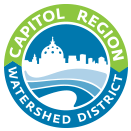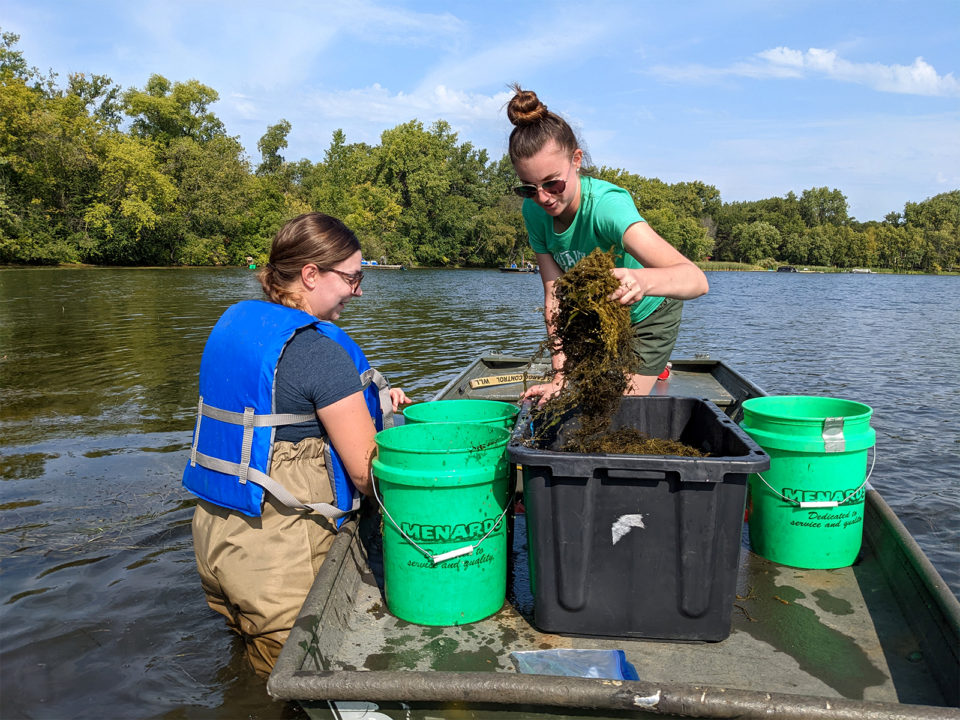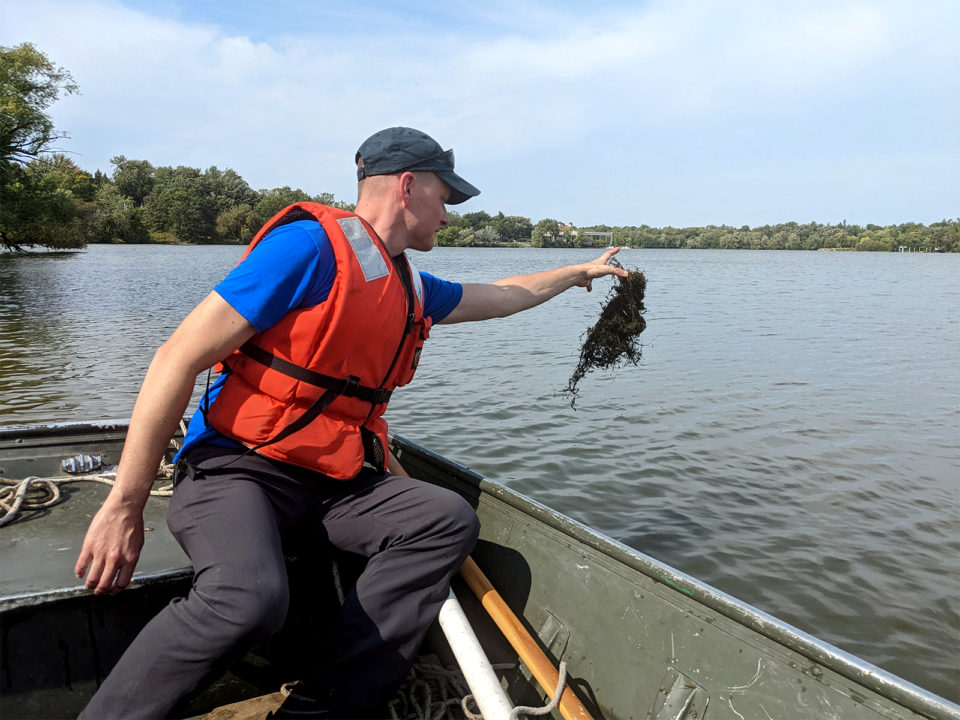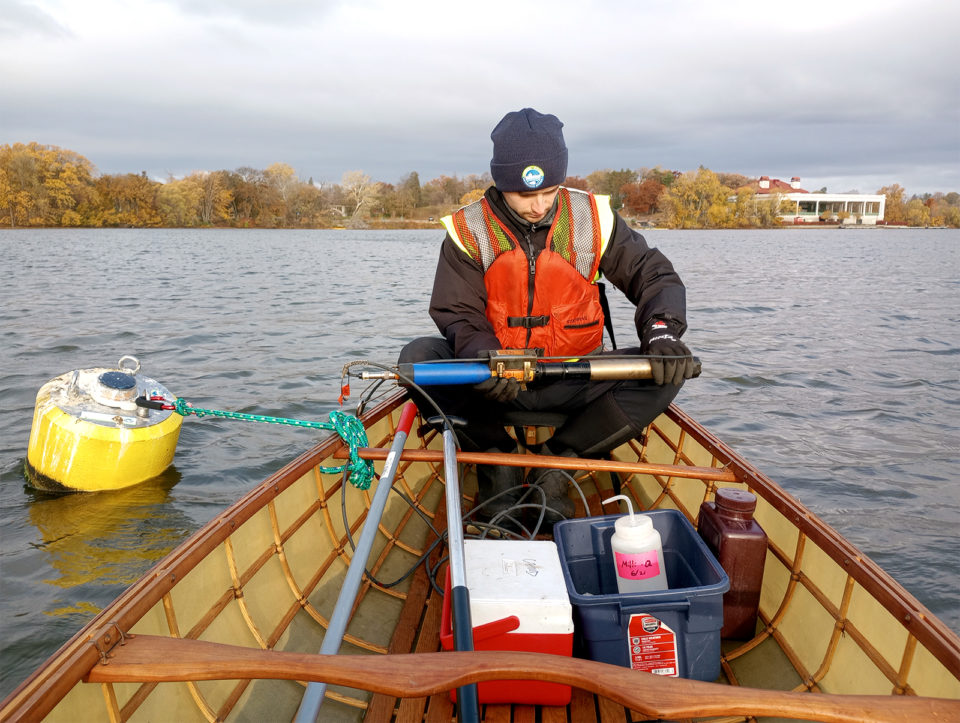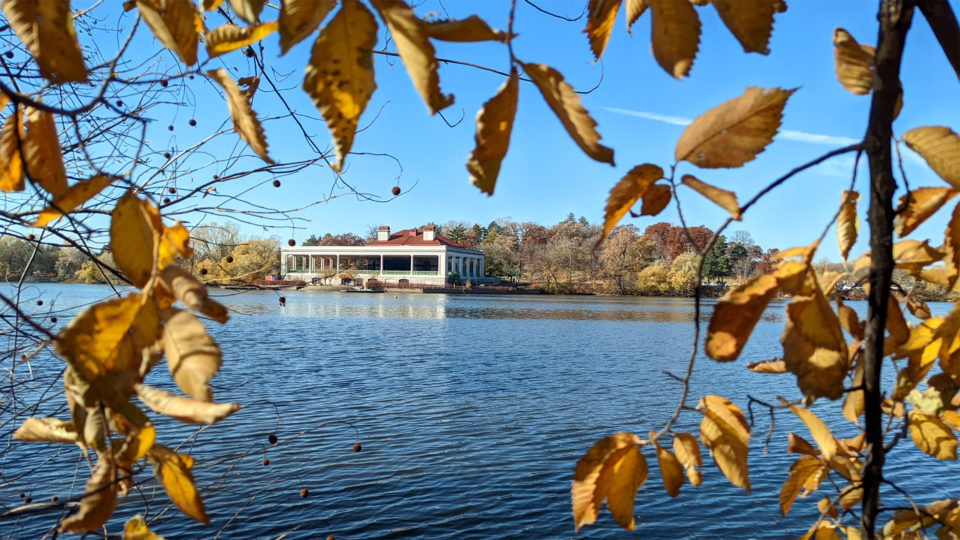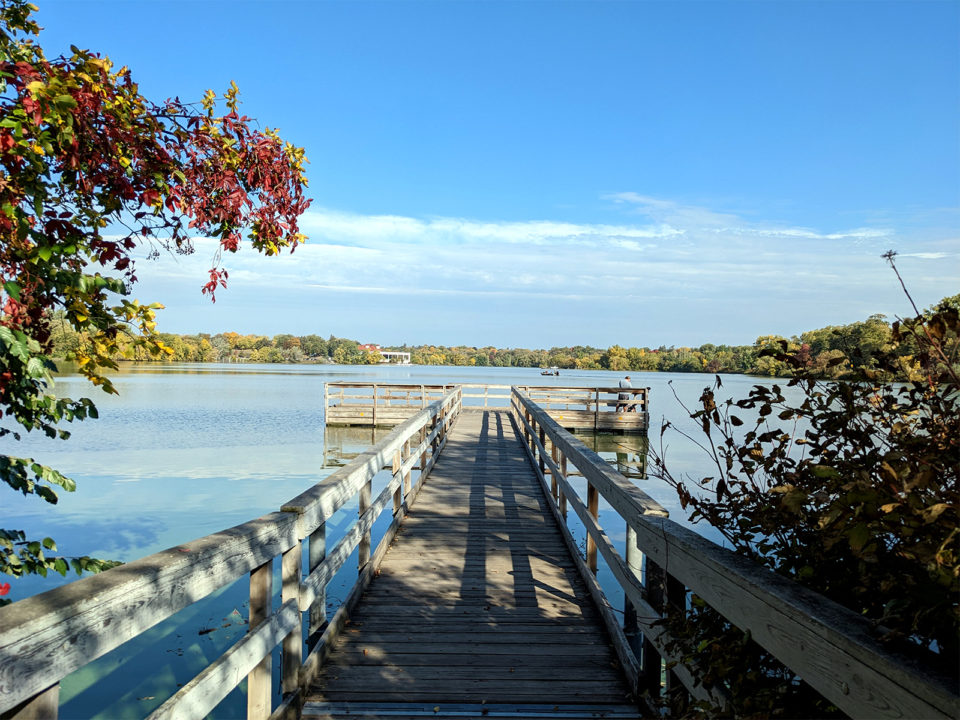Como Lake Fall 2022 Updates
Capitol Region Watershed District (CRWD) has been working to improve water quality in Como Lake for more than 20 years. Following in-lake alum and herbicide treatments in 2020, phosphorus and curly-leaf pondweed levels significantly declined. This means fewer algae blooms, less odor, better habitat and a healthier Como Lake for humans and wildlife alike.
CRWD remains committed to working towards the goals we developed in collaboration with the community and our partners as part of the Como Lake Management Plan. Keep reading to learn more about our efforts to restore the native aquatic plant community, reduce the invasive common carp populations in the lake, and engage residents in prioritizing our work together.
Native Aquatic Plants and Invasive Curly-leaf Pondweed
Native aquatic plants are critical to Como Lake’s water quality and ecosystem health. They provide food and shelter for wildlife such as ducks, turtles, fish, and bugs. Como Lake’s native aquatic plant community has declined over the years due to poor water quality conditions and the takeover of an invasive aquatic plant called curly-leaf pondweed. CRWD has been working to reduce curly-leaf pondweed in the lake to create space for native plants to return. Following in-lake herbicide treatments in 2020 and 2021, curly-leaf pondweed decreased by 96% from 2019 pre-treatment levels. CRWD will continue to explore methods for reducing curly-leaf pondweed since the plant will never be fully eradicated.
In September 2021, native aquatic plants were transplanted into Como Lake and placed in four fenced-in enclosures that served as nurseries. This growing season has shown that the plants are thriving in the enclosures and have spread outside the fencing in some areas. In September 2022, CRWD staff with assistance from Ramsey County Soil and Water Division (RCSWD) and the Minnesota Department of Natural Resources, spread 4,000 live native aquatic plants at 10 locations around the lake. The native aquatic plant community is closely monitored by CRWD and RCSWD.
Common Carp
Common carp are invasive fish that contribute to poor water quality by stirring up the bottom of the lake while searching for food. During feeding, they uproot plants, muddy the waters for native fish, and allow excess nutrients stored in the lake bottom to be released and later consumed by algae. Common carp are one of the most damaging aquatic invasive species due to their wide distribution and severe impacts in shallow lakes and wetlands.
Surveys conducted in 2021 estimated the population of common carp in Como Lake to be above the critical water quality threshold. Box nets were set around the lake from August to October 2022 to capture carp. The nets were baited with corn, a food attractive to carp but not of interest to other fish in Como Lake. The nets were pulled three times and captured a total of 15 common carp. The carp behavior observed was unusual with low feeding rates. CRWD continued to survey the common carp population in 2022 and now estimates that 130-150 carp remain in the lake. We will work to remove the carp population through different methods in the coming years.
Pavilion Parking Lots
The City of Saint Paul repaved and reconstructed the parking lots near the Como Lakeside Pavilion. CRWD helped design stormwater management improvements. Rain gardens were installed by both the north and south lots to reduce pollution entering the lake. Combined, the rain gardens will remove an estimated 7 pounds of phosphorus. That’s equivalent to 3,500 pounds of algae!
Opening in fall 2022, a boat launch near the south parking lot roundabout will be available for non-motorized watercraft like canoes, kayaks and paddleboards.
Community Activities
CRWD hosted or supported several community activities at Como Lake in 2022. Three walking tours in September 2022 informed over 30 residents about the lake’s water quality and ongoing efforts to improve it. Many great questions and discussions were shared on the tours. CRWD hosts tours every fall, watch for the events in our monthly newsletter, and on our website or social media channels.
Trained volunteers interviewed people fishing at the lake, an effort that continued from 2021. Questions asked included time spent fishing on the lake, target fish species, number and size of fish caught, and opinions on their interactions with the fish in the lake. The purpose of the surveys is to learn more about public use of the lake, the quality of the fishery and public desires for the future of the fishery.
In August 2022, CRWD hosted a community fishing event at Como Lake in partnership with the Minnesota Valley National Wildlife Refuge and the Minnesota Pollution Control Agency’s Get the Lead Out. We plan to repeat this event in the future.
The D10 Como Community Council, with support from a CRWD Partner Grant, hosted four trash cleanup events at Como Lake throughout the warmer months of 2022. Combined, a total of 112 volunteers contributed 254 hours and collected 337 pounds of trash in and around the lake!
Como residents can help protect Como Lake by joining the Como Curb Cleanups, a neighborhood fall tradition for over a decade. Neighbors commit to clearing the curb in front of their home and alley of leaves during the fall to help protect water quality at Como Lake. The combined efforts of neighbors help prevent pollution and algae in the lake. In 2021, combined efforts from the Como Curb Cleanups removed 9.78 pounds of phosphorus, the equivalent of 4,890 pounds of algae, before it reached the lake.
Annual Lake Monitoring
CRWD monitors Como Lake to collect data and understand the conditions of the lake. Staff conduct bi-monthly water quality sampling and continuous dissolved oxygen, temperature, pH, and water level readings from April – November. In the winter the lake is sampled for chloride from ice melt used for roads, parking lots and sidewalks. There is a yearly sample of phytoplankton and zooplankton, the microscopic plants and animals in the lake. During the growing season, there are three surveys of aquatic plants. An annual survey of curly-leaf pondweed turions, the reproductive structures of the plant. There are stormwater monitoring stations at three of the storm sewer outlets into Como Lake that measure stormwater flow and pollutants. All this data helps us understand conditions in Como Lake and measure the success of our efforts. CRWD’s annual summary of Como Lake’s 2022 water quality results will be available this winter 2023.
Read more about Como Lake
-
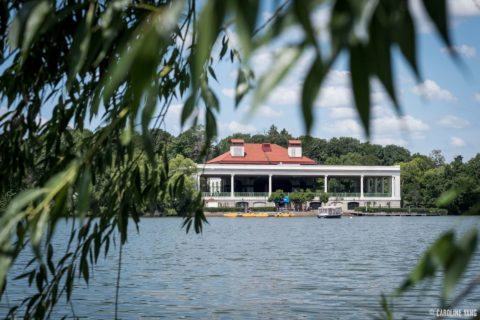
Como Lake
Go To Project -
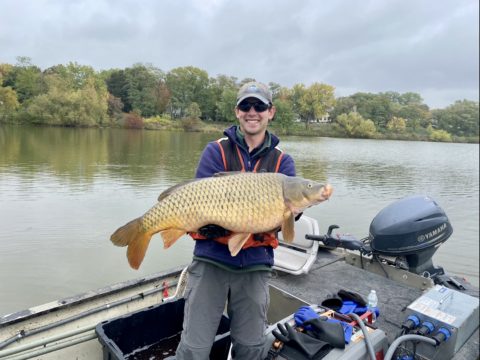
Common Carp Removal
Go To Project -
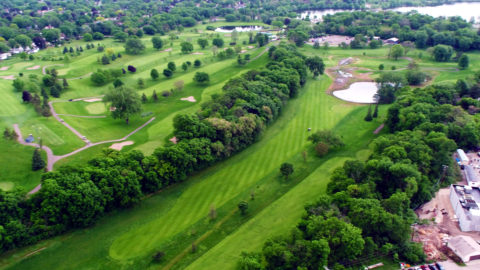
Como Golf Course
Go To Project
